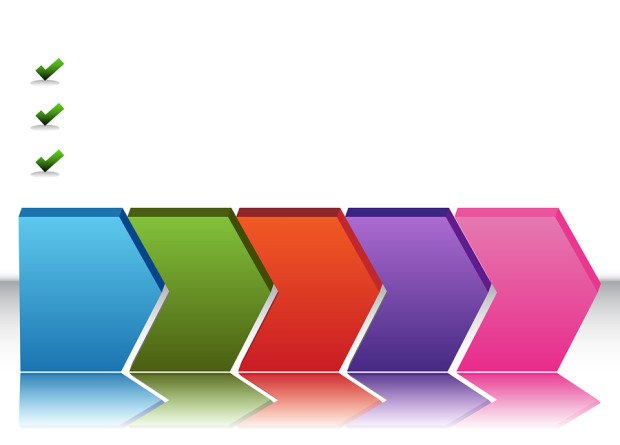On Thursday, A.M. Best published proposed revisions to its core credit rating methodology and to its U.S. property/casualty capital adequacy ratio, targeting a first-quarter 2017 date for the actual implementation of the new tools.
“We feel our ratings are appropriate,” said Matthew Mosher, in a video released by the rating agency in conjunction with the publication of the drafts, addressing concerns of rated companies that their rating will now change. In the A.M. Best video, Mosher reiterated comments he made to Carrier Management during a pre-release interview in January (video excerpt below), indicating that the Best analysts do not expect that use of a new Best’s Capital Adequacy Ratio (BCAR) for P/C insurers will fuel widespread changes to ratings across the industry.
On both occasions, Mosher explained that the industry is well capitalized but that the new BCAR—measuring risk at five difference confidence levels—is simply a more robust assessment that incorporates stochastic modeling and allows analysts to tie BCAR more directly to risk appetite and tolerance statements of individual carriers.
The revisions to the core credit rating methodology—the Best’s Credit Rating Methodology (BCRM)—aren’t signaling a change in rating approach either, he said, describing the BCRM changes instead as “a reorganization” that will bring more clarity to the rating process. “This has a better road map for a company to understand what the key drivers to a rating are and how those are impacting the rating.”
“In the past, we said ‘these are the pieces,'” he said, referring to capital, operating performance, enterprise risk management, and other factors. “We talked about all the pieces but we didn’t really draw the map of how we got from the starting point to look at a company to an end rating.”
In addition to providing transparency, the road map will be a welcome guide to carriers who see their BCAR scores drop—and they likely will do just that because the structure of the BCAR calculation has essentially been flipped upside down. It’s now a ratio to available capital rather than to required capital as in the past—a change that will mean lower calculated BCAR scores even if the stochastic modeling of risk charges making up Best’s required capital calculation (for fixed income holdings, equities, reserve risks, etc.) don’t move. Mosher’s explanation of that change, which means that no company will have a score over 100 anymore, is included in a prior Carrier Management article here and in this video interview.
The draft BCAR document released yesterday suggests that the focus now is on whether BCAR scores are greater than zero at various confidence levels. Analysts will judge the degree of balance sheet strength by determining which (if any) of the five confidence has a negative BCAR score. The draft notes, for example, that if the rating unit’s BCAR is greater zero at the 99.5 percent level but less than zero at the 99.8 level, then the balance sheet is deemed “strong.” Insurers with positive BCAR’s at the 99.9th confidence level are “strongest,” while those with negative BCARs at the 95th confidence level are “very weak,” the draft reveals.
- BCAR Revisited: Understanding A.M. Best’s New Model (February 2016)
- Q&A: Don’t React to Rumors on A.M. Best’s New Model, COO Mosher Says (February 2016)
- Understanding A.M. Best’s New Capital Model: Matthew Mosher Q&A (Part 2) (February 2016)
- A.M. Best’s New Capital Model Still a Work in Progress (April 2015)
- A.M. Best Updates Capital Model Progress (May 2015)
The 88-page draft of the BCRM and the 48-page draft of the P/C BCAR are available in the methodology section of A.M. Best’s website. The rating agency is requesting comments from all interested parties on these draft documents no later than June 30, 2016.
Best also announced that all companies that are evaluated using the U.S. property/casualty BCAR model will receive their new BCAR output based on 2014 data. Managers should review that output in conjunction with the criteria procedure and the BCRM.
Later this year, A.M. Best expects to release proposed revisions to criteria procedures for the BCAR models covering U.S. life/health, Canadian, title and all other non-U.S. insurers. At that time, a second comment period for the BCRM will occur.
A.M. Best executives will review the proposed changes outlined in the latest drafts during two online webinar presentations.





















 Underwriter, Actuary Fears of AI Drop; Work Needed on Collaboration
Underwriter, Actuary Fears of AI Drop; Work Needed on Collaboration  Berkshire Hathaway Enters Post-Buffett Era as Share Prices Fall
Berkshire Hathaway Enters Post-Buffett Era as Share Prices Fall  Good Times for U.S. P/C Insurers May Not Last; Auto Challenges Ahead
Good Times for U.S. P/C Insurers May Not Last; Auto Challenges Ahead  Slideshow: Carrier Management’s 2025 Top Editor’s Picks (Unlocked)
Slideshow: Carrier Management’s 2025 Top Editor’s Picks (Unlocked) 




